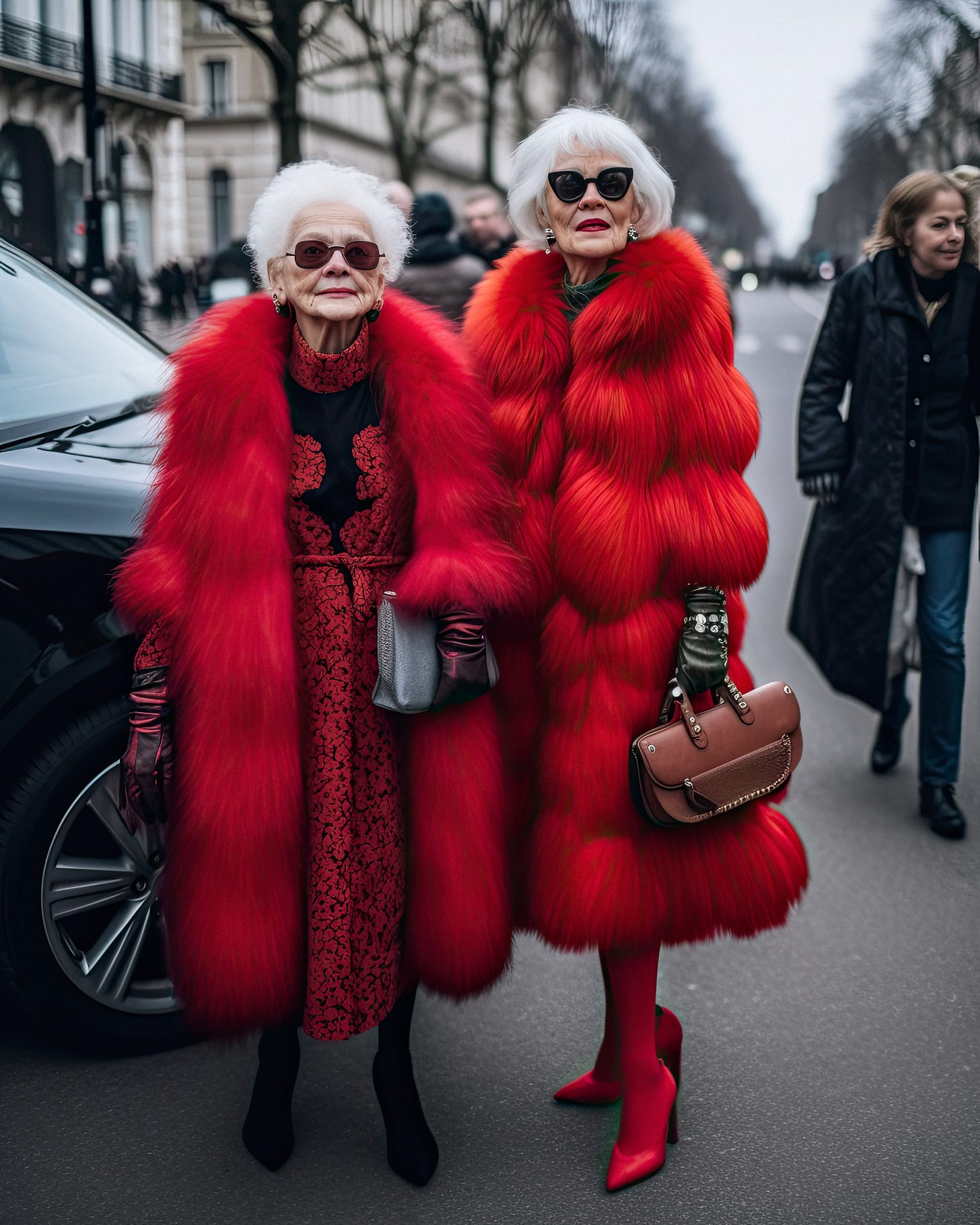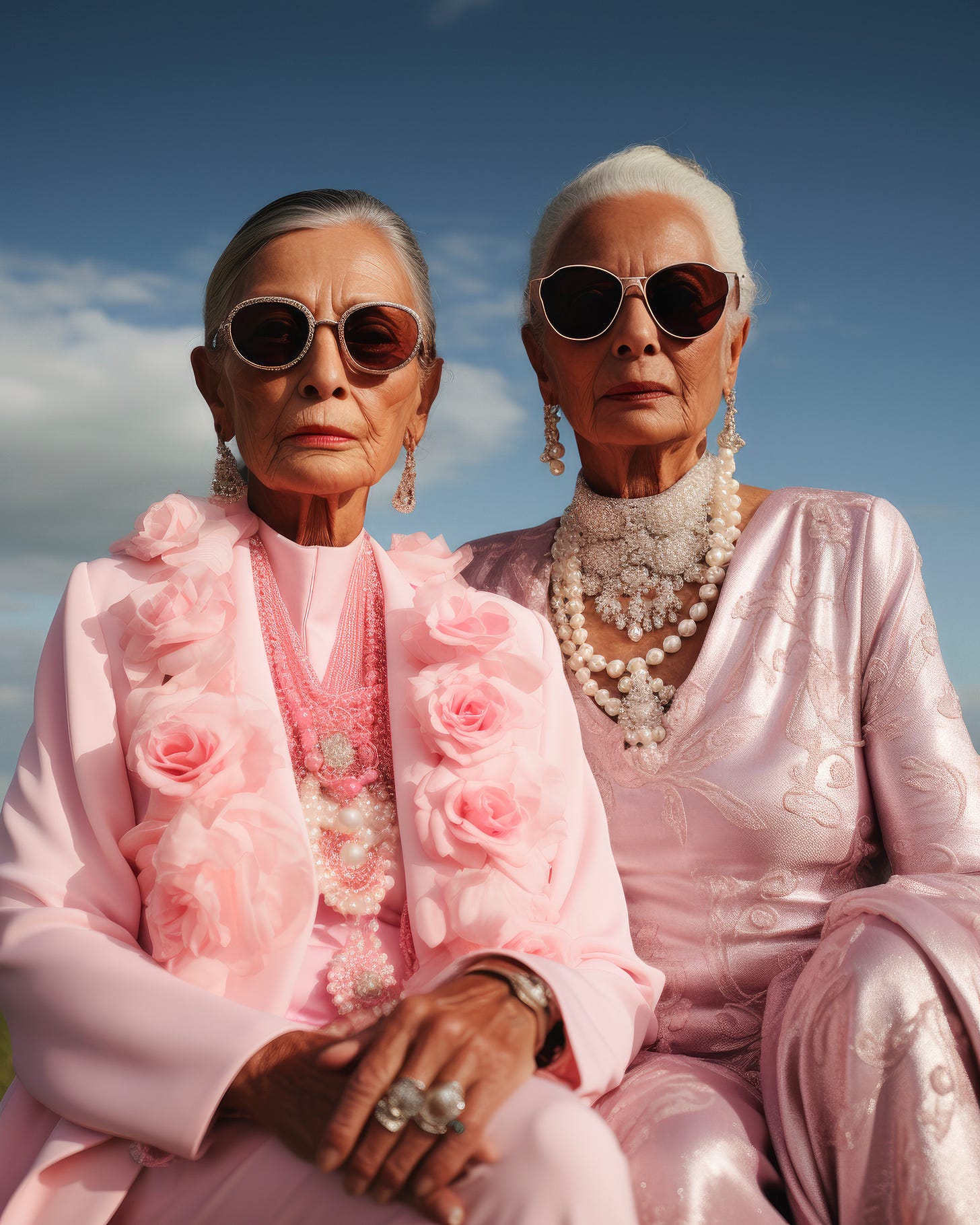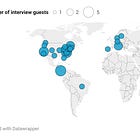📜 AISW #067: Liz Sunshine, Australia-based documentary fashion photographer (AI, Software, & Wetware interview)
Written interview with Australia-based documentary fashion photographer Liz Sunshine on her stories of using AI and how she feels about AI using people's data and content
Introduction -
This post is part of our AI6P interview series on “AI, Software, and Wetware”. Our guests share their experiences with using AI, and how they feel about AI using their data and content. (This is a written interview; read-aloud is available in Substack.)
Note: In this article series, “AI” means artificial intelligence and spans classical statistical methods, data analytics, machine learning, generative AI, and other non-generative AI. See this Glossary and “AI Fundamentals #01: What is Artificial Intelligence?” for reference.
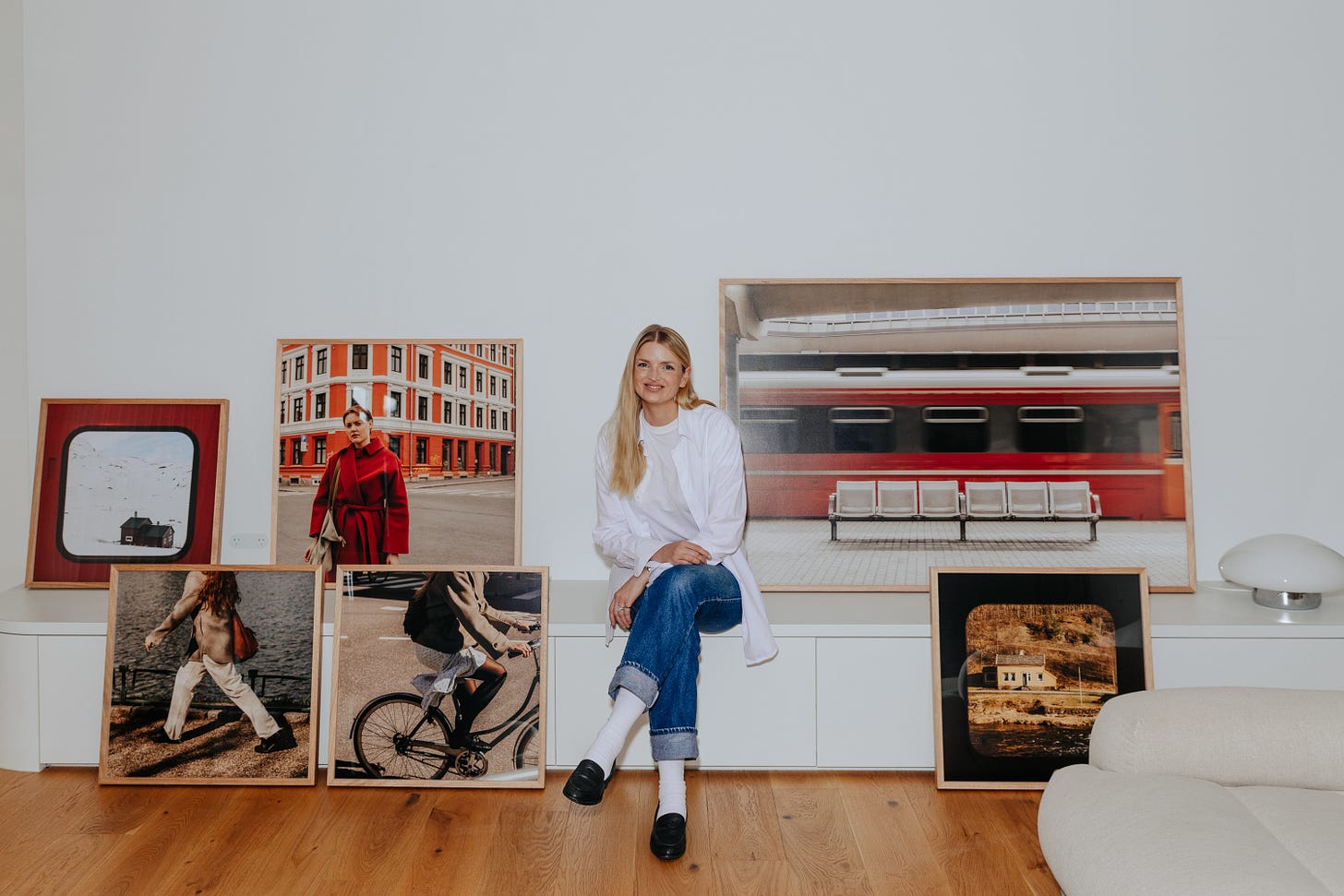
Interview -
I’m delighted to welcome Liz Sunshine from Melbourne, Australia as my guest for “AI, Software, and Wetware”. Liz, thank you so much for joining me for this interview! Please tell us about yourself, who you are, and what you do.
In 2009, street style was a new concept of photography. Instagram didn’t exist, and I was just starting my career as a photographer. I had studied film in high school, but in the first year of university I watched the professional photography world rapidly shift to digital and a whole host of professional people who didn’t pivot quickly were left behind.
For the last 16 years, I have been a fashion documentary photographer, capturing what people are wearing on the streets - both everyday and at fashion weeks and events.
At the beginning of 2022, I started a project called “Our Relationship With Clothes”, a soft activism project that explores our connection to clothing through art and conversation. The project raises awareness for textile waste and encourages people to build a deeper, more mindful relationship with what they wear.
In 2023, I self-published a book called “Future Fashion” as part of the project. It’s believed to be the first AI fashion book published globally and depicts 100 AI-generated images of fashionable older women, created using Midjourney.
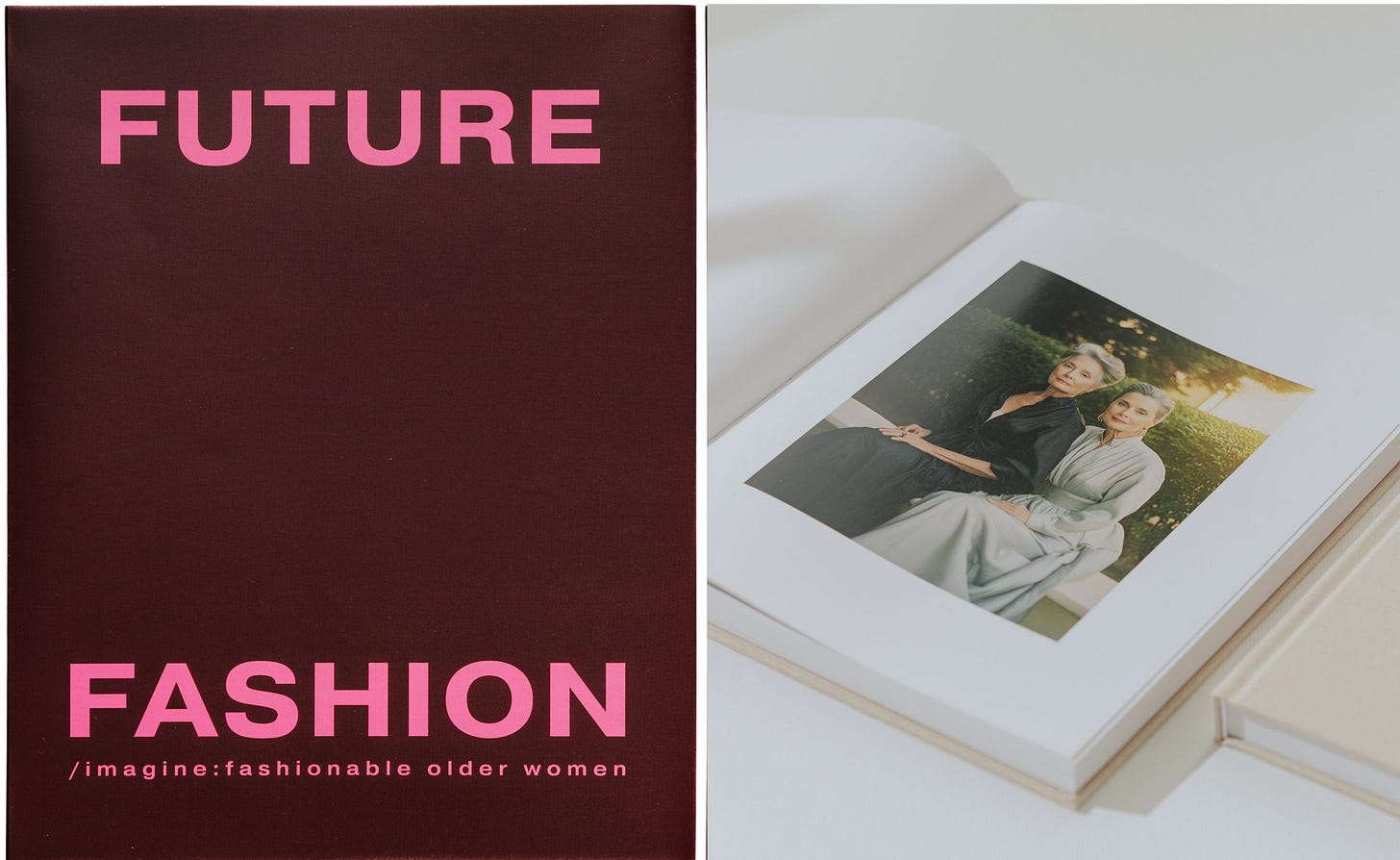
(2) What is your level of experience with AI, ML, and analytics? Have you used it professionally or personally, or studied the technology?
Compared to others, I imagine I’m a very basic user. I started using Midjourney in April 2023, and by mid-July had compiled 6,000 images of fashionable older women. I decided to publish a book, and by November that year had launched in Melbourne and was sending books all over the world.
Midjourney was still in its infancy, but the images I was able to create felt real based on what I knew from my documentary work. It was emulating light patterns, fabric wrinkles, and aging bodies accurately. Quite a few of those first images went super viral to the tune of a million shares.
AI was the tool I needed at the time. It helped me create a series of visually older women that I think the world was craving, and I had been unable to document in Australia over my career - whenever I asked women of a certain age to take their picture, they always said “No, not me dear, I’ve passed my time.”
I wasn’t interested in being swept up in the hype of AI social media success, so when the project felt complete, I went back to my documentary photography and haven’t looked back until just recently. Exploring new ideas using my own images and pushing myself to create something that feels just as curious and worthwhile as Future Fashion did at the time.
Beyond AI image creation, I also use ChatGPT and Grammarly for proofreading - I’m a terrible speller and have a bad habit of skim reading my own work, often reading words that aren’t even there. I believe you only use AI for the skills you don’t want to keep, so I’m strict about using it for my writing the way I would an editor. I write a piece, then ask ChatGPT to proofread, pulling out the engaging parts or quotes, and letting me know which areas fall flat.
I also recently asked ChatGPT to reverse-engineer a colour grade on one of my old images, and help me organise my project ideas. I am very conscious of the environmental impact of AI, so only use it for tasks I can’t complete myself.
There are also applications outside my control where AI is implemented, like Google.
(3) Can you share a specific story on how you have used a tool that included AI or ML features? What are your thoughts on how the AI features [of those tools] worked for you, or didn’t? What went well and what didn’t go so well?
Reference for this question: "But I don't use AI": 8 Sets of Examples of Everyday AI, Everywhere
Following a conversation with my friend - the well-respected Australian artist Tom Blachford - I was encouraged to play with Midjourney. When I fell down the rabbit hole of creating Future Fashion, I had been trying to ‘imagine’ Australian style, pushing and pulling the technology to see whether it could emulate my documentary work. And while it couldn’t, what I saw in those first images was a really clever, nuanced depiction of reality - far more detailed and interesting than the fairy floss trees circulating on social media at the time.
It was the emulation of reality, combined with the subject matter - fashionable older women - that propelled my obsession and made me dive deeper.
Midjourney was released in July 2022, and I started creating the bulk of my Future Fashion images in April 2023, using version 5. By the time I had completed the series in July of that same year, it was using version 5.2. Working in these earlier models of AI was exciting. I made no effort to hide the fact the images were AI-generated and left oddities, like a woman standing upright with one leg. At the time, I was not only excited by what was being created but also the thought that this series of work was also documenting a period in AI that was ephemeral and fleeting.
What went well? As a documentary photographer I’m excited by discovery. While I might begin with a clear intention, so much of my documentary work - the subject, the timing - is out of my control. It’s a process that demands patience, but when the right image appears, the satisfaction is unparalleled.
Imagine waiting on a corner of a street for two hours, hoping to capture a balloon - and then, finally a man walks past holding a red one.
AI felt similar to this. Though the process was much faster, I might create 30 images in an hour that were all nothing, and then from the simplest tweak to a prompt or completely out of the blue - magic would happen. I think this sense of discovery made the process really enjoyable, and before I even realised it was happening, I had created this body of work that felt deeply true in spirit to the rest of my practice.
What didn’t go well? I think being an early adopter to anything is fraught with criticism. I sort of welcomed it and had many long conversations about why I hadn’t used real women and how — unless it’s a documentary image — most photographs are constructed, and essentially ‘fake’.
I wish people within the creative industry weren’t as fearful of the technology, and that I didn’t feel, in some shape or form, like I was creating work that embodied that fear.
(4) If you have avoided using AI-based tools for some things (or anything), can you share an example of when, and why you chose not to use AI?
All the time. As a documentary photographer, I see AI as a tool that generally sits outside the scope of my professional work. Though I created 6,000 AI images using Midjourney in three months, I have probably taken 50,000 documentary images over the last three years. And as the lines of constructed and real images continue to blur, I feel increasingly drawn to film – the ultimate analogue medium – and in many ways, the opposite of AI image creation.
I also would never use AI to write a piece for me. Over the last three years I’ve been writing more and more. It’s a skill I was once very afraid of, but now value highly and would never want AI to take that away from me.
AI is an incredible tool, but it can often erode or simplify your own skillset. To me, understanding my boundaries – what skills I want to preserve, and where AI might support me – feels essential as we integrate it more and more into our world.
(5) A common and growing concern nowadays is where AI and ML systems get the data and content they train on. They often use data that users put into online systems or publish online. And companies are not always transparent about how they intend to use our data when we sign up.
How do you feel about companies using data and content for training their AI/ML systems and tools? Should ethical AI tool companies be required to get Consent from (and Credit & Compensate) people whose data they want to use for training? (the “3Cs Rule”)
This is hard for me to answer, as I have lived in a world of social media and image sharing my entire career - Instagram launched in 2011. While some photographers get very upset about the use of their images without permission, I’ve always been of the school of thought that this is simply the world we live in now, with social media and Pinterest continuously sharing work without the creator's consent or credit.
How do I feel about companies using my data? I’m probably quite neutral, but I do think transparency and individual control are really important. I think that we ultimately need regulation across many aspects of the world we’re moving into. And I predict that the disruption we feel now is nothing compared to what's coming.
(6) As a user of AI-based tools, do you feel like the tool providers have been transparent about sharing where the data used for the AI models came from, and whether the original creators of the data consented to its use?
No - but it was still very early days, I probably also went in very naive and didn’t know where to look.
(7) As consumers and members of the public, our personal data or content has probably been used by an AI-based tool or system. Do you know of any cases that you could share (without disclosing sensitive personal information, of course)?
No - but this probably speaks more to my lack of education on the topic than to the absence of it happening.
(8) Do you know of any company you gave your data or content to that made you aware that they might use your info for training AI/ML? Or have you ever been surprised by finding out that a company was using your info for AI? It’s often buried in the license terms and conditions (T&Cs), and sometimes those are changed after the fact. If so, did you feel like you had a real choice about opting out, or about declining the changed T&Cs?
Reference for this question: "Your Data is Worth Thousands—Here’s Who’s Selling It (And How to Stop It)" by
I feel like our data – similar to our attention – is the commodity of now. It’s not a question of opting in, it’s a question of how (or whether) we’re able to opt out.
(9) Has a company’s use of your personal data and content created any specific issues for you, such as privacy, phishing, or loss of income? If so, can you give an example?
No - not that I’m aware of.
(10) Public distrust of AI and tech companies has been growing. What do you think is THE most important thing that AI companies need to do to earn and keep your trust? Do you have specific ideas on how they can do that?
For a long time, I think we’ve assumed that a spade is a spade. If a wool jumper is labelled ‘wool jumper’, we trust that it’s actually made of wool — when in reality, it’s often polyester (plastic) or a blend with a small percentage of wool.
In a world moving as fast as ours, distrust should be our default. It should be our self-protection mechanism - the pause encouraging us to be informed, dig deeper and educate ourselves before being swept up in a wave of new technology.
Like all the major tech companies, trust is earned over time - through consistent behaviour, clear values and real-world outcomes. I don’t think there’s a shortcut to building that trust. It’s going to take time.
(11) Liz, thank you so much for sharing your experiences with AI. Is there anything else you’d like to share with our audience?
We live in a world of constructed images. Teams of professional people layer their skills to create works that are in no way real. Models, make-up, clothes, stylists, lighting, retouching, etc, all ensure a calculated approach and outcome to the images we see every day. Even the iPhone images we see on our social feeds have been taken in ideal lighting, with a constructed scene or scenario, mood, and feeling to ensure a likeable approach to creation. Unless it is a documentary image - the images around us are not real. AI images are also constructed images, though constructed through pixels and prompted technology, at the hands of AI specialists; they are also unreal.
AI is already changing the game in some accessible and helpful ways for photographers, like generative fill in Photoshop, and some more polarising ways, like replacing studio teams with digital AI specialists to create fashion campaigns.
Like all art, photography is valuable because of what it says and who creates it, not because of the tool used in the creation. Art galleries nationwide now collect and show AI work on their walls, echoing this idea.1
The question should not be, “How will AI change the future of creatives and the world around us?” It should be, “How will you use AI in your process, and what will the work you create say about you?”
Future Fashion is available via our project website and is helping us raise money for a local poster campaign we are planning to execute in late 2025, to spread awareness for textile waste in Australia.
Liz, thank you so much for your time and for sharing your experiences with AI in this interview. Good luck with Future Fashion and with your campaign on reducing textile waste in Australia!
Interview References and Links
Liz Sunshine’s professional website: “Our Relationship With Clothes”
Liz Sunshine on LinkedIn
on Substack (my relationship with clothes)
About this interview series and newsletter
This post is part of our AI6P interview series on “AI, Software, and Wetware”. It showcases how real people around the world are using their wetware (brains and human intelligence) with AI-based software tools, or are being affected by AI.
And we’re all being affected by AI nowadays in our daily lives, perhaps more than we realize. For some examples, see post “But I Don’t Use AI”:
We want to hear from a diverse pool of people worldwide in a variety of roles. (No technical experience with AI is required.) If you’re interested in being a featured interview guest, anonymous or with credit, please check out our guest FAQ and get in touch!
6 'P's in AI Pods (AI6P) is a 100% reader-supported publication. (No ads, no affiliate links, no paywalls on new posts). All new posts are FREE to read and listen to. To automatically receive new AI6P posts and support our work, consider becoming a subscriber (it’s free)!
Series Credits and References
Disclaimer: This content is for informational purposes only and does not and should not be considered professional advice. Information is believed to be current at the time of publication but may become outdated. Please verify details before relying on it.
All content, downloads, and services provided through 6 'P's in AI Pods (AI6P) publication are subject to the Publisher Terms available here. By using this content you agree to the Publisher Terms.
Microphone photo by Michal Czyz on Unsplash (contact Michal Czyz on LinkedIn)
Credit to CIPRI (Cultural Intellectual Property Rights Initiative®) for their “3Cs' Rule: Consent. Credit. Compensation©.”
Credit to for the “Created With Human Intelligence” badge we use to reflect our commitment that content in these interviews will be human-created:
If you enjoyed this interview, my guest and I would love to have your support via a heart, share, restack, or Note! (One-time tips or voluntary donations via paid subscription are always welcome and appreciated, too 😊)







